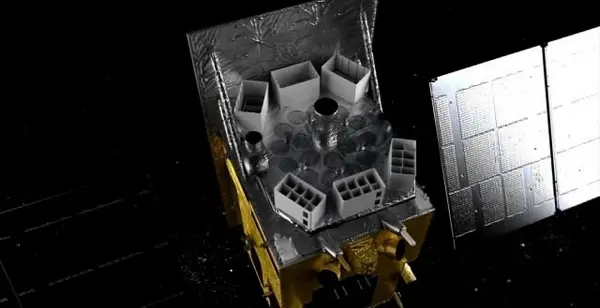China launched on Thursday its first space telescope – Hard X-ray Modulation Telescope (HXMT) – with the aim of studying celestial sources of X-rays in the Milky Way among other strange space phenomena, such as pulsars and belching "big eaters".
HXMT, China's first X-ray space telescope, or astronomical satellite, was launched on Thursday at 11 a.m., carried by a Long March-4B rocket.
The telescope was lifted off via a Long March-4B rocket at 11 a.m. BJT from the Jiuquan Satellite Launch Center in northwest China.
Some black holes and neutron stars (the collapsed cores of a star) can only be detected by X-ray telescopes because they either do not emit visible light or are covered by dust.
Staff loading HXMT to the launch pad.
China hopes to unveil certain space mysteries, such as "the evolution of black holes and the strong magnetic fields of neutron stars," said Zhang Shuangnan, Lead Scientist of HXMT and Director of the Key Laboratory of Particle Astrophysics at the Chinese Academy of Sciences (CAS).
The telescope will also help study new activities of black holes, the impact of extreme gravity and density conditions on the state of neutron stars, and the substances inside pulsars – highly magnetized rotating neutron stars, which had been previously mistaken for signals from aliens – among other undertakings that "are expected to bring new breakthroughs in physics," according to Zhang.
HXMT is launched to study the origins of universe and black holes.
Among all known space telescopes, Hubble Space Telescope, which was launched by the US in 1990, is currently the world’s largest and most versatile such instrument still orbiting in low Earth orbit. It has made invaluable contributions to science by sending back many photos of the deep space.
HXMT was jointly designed and built by the China National Space Administration (CNSA) and the Chinese Academy of Sciences (CAS) since 2000. Hopes are pinned on HXMT to outperform Hubble and become the world’s largest and most agile space telescope, with the highest resolution as well.
According to scientists at the CAS, the telescope has larger detection area, broader energy range and wider field of view than other X-ray astronomical satellites launched by other countries. It will work on wide energy range between 1 and 250 keV, enabling it to complete many observation tasks previously requiring several satellites.
(CGTN)
 简体中文
简体中文

